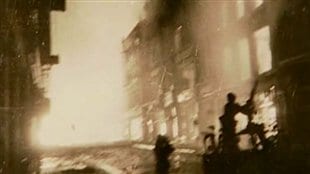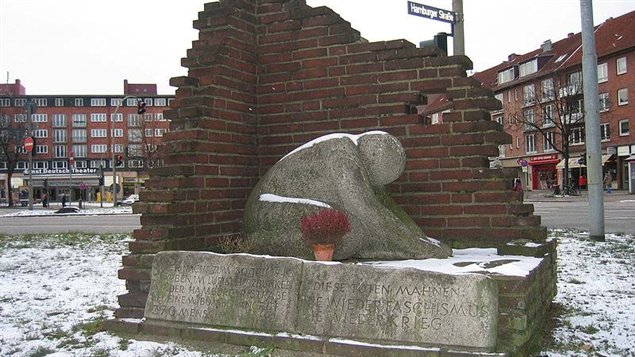The end of July in 1943 was hot and dry in north Germany. The Second World War was fully underway.
The bitter desert war had just seen the Germans pushed out of North Africa, and Canadian and allied troops had landed in Sicily where they were fighting across the island pushing towards Italy.
In the air, the Allies had been bombing German cities in both day and night raids. In this final week of July however, a plan was devised to attack Hamburg, an important shipbuilding, armaments and U-boot centre.
It was called Operation Gomorrah and was the heaviest aerial assault in history.

documentary on YouTube
© Der Speigel documentary-Youtube
Beginning on July 24, the city was hit during the day by the USAF and at night by the RAF and RCAF. The campaign lasted eight days and seven nights and resulted in a new word in the lexicon, “firestorm”.
Using high explosives, and incendiaries to ignite the rubble, thousands of fires were created which continued to burn as firefighters could not manoeuvre through streets blocked with rubble, or were themselves killed or injured by delayed action bombs.
Near midnight on the 27 of July, 739 bombers attacked. The additional fires combined with the already burning buildings, and then in the hot dry city, they merged into a hellish inferno never before seen.
A massive tornado of flames reached some 1,500 ft into the air above the city and winds tore through streets at up to 240 km/h as air was sucked in to feed the blaze. The super-heated air reached 800 C and even the asphalt on the streets caught fire. People caught outside, were swept into the blaze by the hurricane force winds, while others in underground shelters were suffocated by the lack of oxygen which was feeding the fire raging above.
In the end, between 40-50 thousand people were killed, while tens of thousands more were injured or maimed.
In the aftermath, almost the entire city was damaged, with over 20 square km incinerated, half the homes were destroyed and a million people fled.
Operation Gommorah is sometimes called “Germany’s Hiroshima”.
As the city never really recovered as an arms production centre, the Allies considered the campaign a success.







For reasons beyond our control, and for an undetermined period of time, our comment section is now closed. However, our social networks remain open to your contributions.